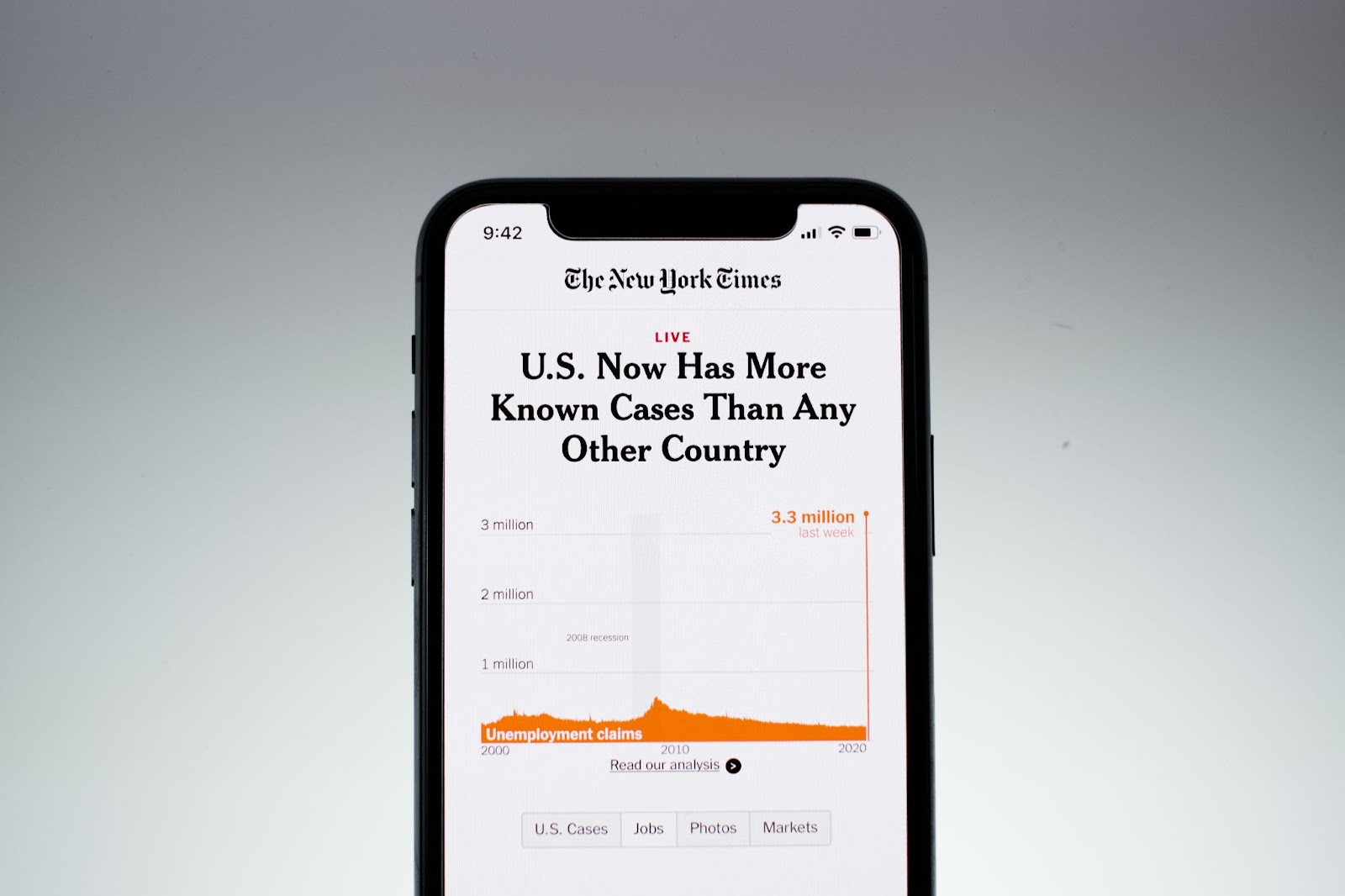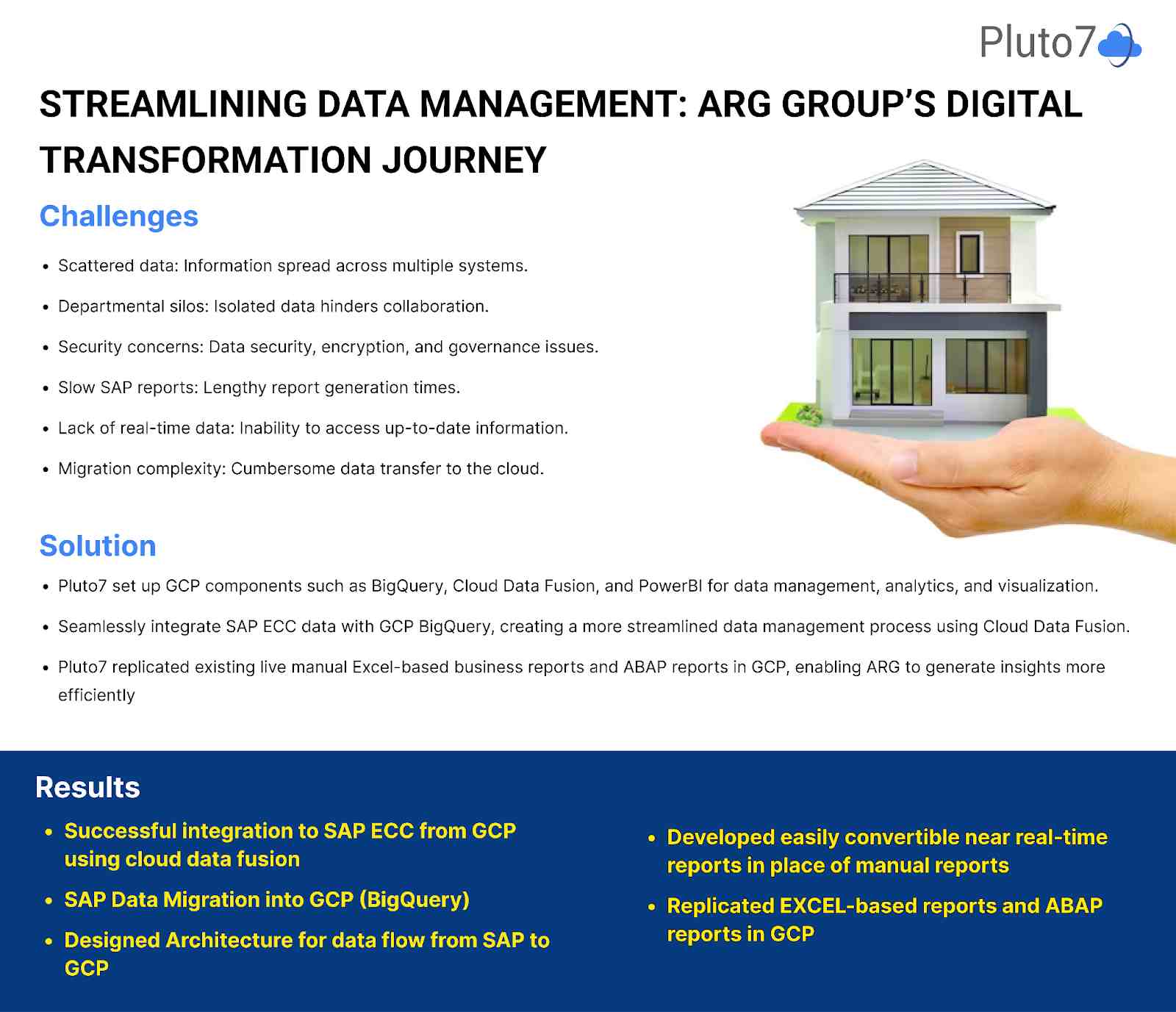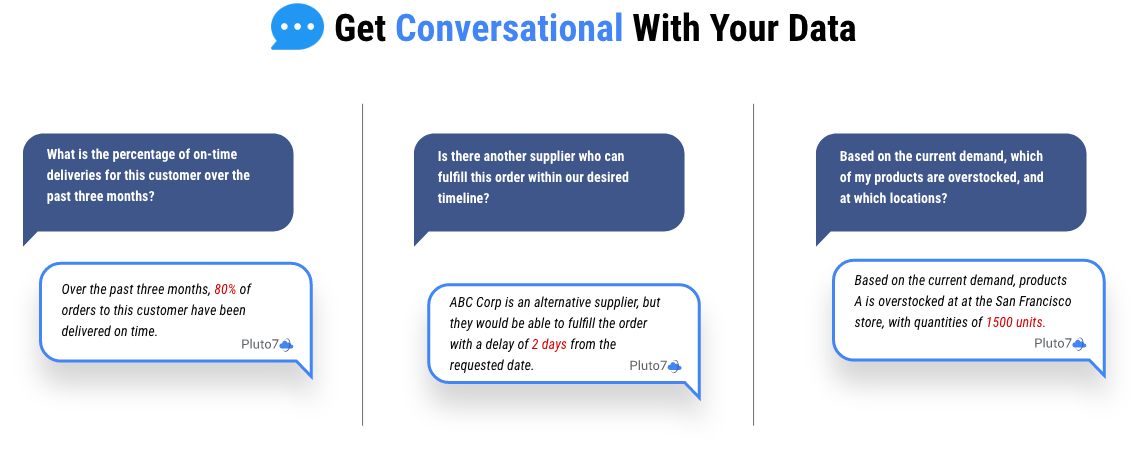
Transform Your Supply Chain Planning and Marketing Strategies with Google Cloud and SAP Integration

Transform Your Supply Chain Planning and Marketing Strategies with Google Cloud and SAP Integration
June 19, 2023 | Premangsu Bhattacharya
Blog / How to Boost Your Supply Chain Efficiency with SAP and Google Cloud
The business landscape, like the rest of the world, is evolving at a blistering pace. Global markets shift without warning, customer behaviors and preferences evolve at an accelerated rate, and the advent of technology continues to disrupt traditional industries. Now, more than ever, companies are feeling the urgency to keep pace with these changes.
Data sits at the core of this digital revolution. From enabling personalized customer experiences to streamlining operational efficiencies, data has become a critical part of business strategy. Yet, businesses are wrestling with a dilemma similar to a Shakespearean tragedy. In this modern-day Hamlet, enterprises struggle with siloed data, unable to act with precision and speed. Decisions are delayed, insights are hidden, and the entire value chain becomes convoluted.
Traditional ERPs, once hailed as the ultimate solution for business management, are quickly becoming outdated, struggling to adapt to this fast-paced, data-driven environment. It’s time to break free from these confines and rethink the way we utilize and interact with data.
Several trends are shaping the supply chain industry, redefining the way businesses operate and compete.

Real-time supply chain visibility has become essential in the digital era. As global supply chains become more complex and interconnected, businesses need to monitor products, orders, and inventory levels across the supply chain continuum in real-time. This allows them to respond swiftly to disruptions, ensuring continuity and resilience in their operations.
Imagine an automotive manufacturer grappling with component shortages due to unforeseen supply chain disruptions. With real-time visibility, the manufacturer can promptly identify bottlenecks, understand the ripple effects on the production line, and take immediate action. This could mean activating alternative suppliers, adjusting production schedules, or communicating effectively with customers about potential delays.
Pluto7’s solutions leverage Google Cloud and SAP for real-time visibility across the supply chain.
For example, a large manufacturer used our solutions to harmonize data from disparate SAP systems and other sources in Google Cloud. This unified data view enabled them to identify disruptions immediately and adjust their operations accordingly, enhancing their agility and resilience.
The introduction of advanced analytics and machine learning has altered how businesses understand demand and supply trends. Traditional ERP systems often struggle with data silos and complex data integrations, making predictive analytics a challenge.
Google Cloud, however, with its advanced analytics capabilities, paves the way for new possibilities. A standout feature is its Federated Learning system, which allows machine learning models to be trained across multiple decentralized servers without sharing data. This feature is particularly valuable for businesses dealing with sensitive data.
Pluto7’s Demand ML solution leverages Google Cloud’s capabilities, allowing businesses to integrate over 250 external demand signals directly into their decision-making process. This seamless integration can then feed into SAP Analytics Cloud, Looker, or spreadsheets as per preference.
The outcome is an agile, precise decision-making process for SAP IBP users. They can respond quickly to market fluctuations, make better-informed decisions, and manage inventories more efficiently. The result is a well-balanced supply chain with reduced costs and improved customer satisfaction.

IoT devices and sensors are everywhere – from mobile scanners in warehouses to smart shelves in retail stores, collecting a wealth of data in real time. This surge of data from multiple sources can offer a wide range of business benefits, such as real-time tracking of goods or proactive problem-solving. However, extracting meaningful insights from this vast ocean of data poses a significant challenge.
Traditional ERP systems alone may fall short in efficiently integrating and managing this diverse and enormous data. But when ERP systems like SAP are intertwined with IoT, it opens up new possibilities, enabling businesses to elevate their decision-making process and actions. The data collected by IoT devices, once fed into an ERP system, gains a structure and a purpose, turning into meaningful insights.
Pluto7’s data platform is designed to support this integration, making the data collected by IoT devices easily accessible for ERP systems. Available on Google Cloud Marketplace and SAP BTP, these solution accelerators blend data from various sources, creating an enriched data foundation ready for advanced analytics. The result is a seamless integration that helps businesses to make the most of their IoT capabilities, ensuring reliable, actionable insights that drive informed decisions and strategic actions.

Modern ERP analytics are no longer confined to the internal data stored within the systems. They are now reaching out, harnessing external insights, and utilizing advanced analytics to deliver deeper, more comprehensive insights.
The integration of external data into ERP systems has opened the door to more contextual and relevant insights. Questions like, “What is the status of my inventory?” or “What impact will the port strike have on my shipments in Baltimore?” can now be answered with higher accuracy and in real-time.
These developments have brought along a significant shift towards interactive, conversational analytics. It has become easier to command ERP analytics with statements like, “Considering the web traffic on my e-commerce store, optimize my demand forecast.”
But how do businesses harness the power of external insights? This is where Pluto7’s advanced solutions come into play. By leveraging Google Cloud’s cutting-edge analytics tools like BigQuery and Vertex AI, Pluto7 allows businesses to expand the boundaries of their SAP ERP systems. The solutions enable companies to blend their internal data with a wealth of external data, running sophisticated analytics on this unified dataset to extract unprecedented insights.

As consumer expectations evolve, personalization has emerged as a critical trend. Modern consumers gravitate towards brands that anticipate their needs, resonate with their values, and offer tailor-made solutions. This shift demands a deep understanding of the consumer’s journey, which spans multiple touchpoints, both digital and non-digital.

Traditional ERP systems struggle to connect these dots, given the siloed nature of data sources. However, with Pluto7’s data platform solutions on Google Cloud and SAP BTP, businesses can overcome these hurdles.
By leveraging Google Cloud’s BigQuery and integrating Google Search and Trends data, as well as consumer insights from Google AdTech, brands can unlock a comprehensive view of their customer journey. This unified data landscape empowers businesses to make targeted offerings, optimize ad spend, and deliver a truly personalized customer experience.
Generative AI, with its ability to generate new, actionable insights, is revolutionizing the way businesses operate. Google Cloud’s PaLM 2, powered by this technology, brings a search-like feature to enterprise data, empowering virtually anyone to find answers to their business questions.
Pluto7’s data platform leverages the Google Cloud Cortex Framework to create canonical views of both SAP and non-SAP data sources. Then, using Language Language Models, the platform reads the integrated data and provides insights.
These insights can come in the form of answering intricate questions, offering recommendations, or even predicting future trends.

The above image is a representation of how Pluto7’s Data Platform uses LLM to provide planning insights based on real-time data
In an increasingly interconnected and digital world, the ability to harness and exploit data effectively is the cornerstone of any business’s competitiveness. The convergence of SAP’s robust ERP solutions with Google Cloud’s innovative and powerful capabilities provides a promising path for businesses to improve operational efficiency, drive innovation, and secure a competitive edge.
This amalgamation of two technology giants brings forward an array of benefits, covering areas such as data integration, machine learning, advanced analytics, and AI-driven insights. Let’s delve deeper into these key aspects to truly understand the transformative potential of this powerful collaboration.
Google Cloud Cortex Framework, an integral part of the Google Cloud data platform, is designed to address complex data integration scenarios with ease. For businesses working with an array of SAP and non-SAP systems, the framework acts as a versatile bridge, seamlessly integrating data from diverse sources and providing a unified view of the business landscape.
Capability #1: Data Integration
| Traditional ERP | ERP combined with Pluto7’s Data Platform and Google Cloud |
|---|---|
| Limited to predefined systems, often creating data silos | Facilitates smooth integration between SAP and non-SAP systems, breaking down data silos |
Capability #2: Integration with External Datasets
| Traditional ERP | ERP combined with Pluto7’s Data Platform and Google Cloud |
|---|---|
| Limited capabilities for integrating external datasets | Simplifies integration of external datasets, enhancing the depth and breadth of analytics |
Capability #3: Bi-directional Data Flow
| Traditional ERP | ERP combined with Pluto7’s Data Platform and Google Cloud |
|---|---|
| Limited or complex procedures for bi-directional data flow | Simplifies bi-directional data flow, allowing data to move from SAP to GCP for analysis, and vice versa |
Capability #4: Advanced Analytics
| Traditional ERP | ERP combined with Pluto7’s Data Platform and Google Cloud |
|---|---|
| Limited capabilities for advanced analytics. | Seamless integration with advanced analytics tools like BigQuery and Vertex AI |
Capability #5: Data Quality
| Traditional ERP | ERP combined with Pluto7’s Data Platform and Google Cloud |
|---|---|
| Requires significant manual effort to ensure data quality | Automated quality checks and data cleansing, ensuring high-quality data |
Capability #6: Performance and speed
| Traditional ERP | ERP combined with Pluto7’s Data Platform and Google Cloud |
|---|---|
| Performance issues can arise with complex queries | High-speed querying, even with complex data sets |
Capability #7: Innovation
| Traditional ERP | ERP combined with Pluto7’s Data Platform and Google Cloud |
|---|---|
| Limited by inherent system capabilities | Constant innovation backed by Google Cloud’s R&D |
Google Cloud’s BigQuery is a fully-managed, serverless data warehouse that enables super-fast SQL queries using the processing power of Google’s infrastructure. It is renowned for its scalability and performance, handling petabytes of data without any hassle.
Moreover, BigQuery facilitates machine learning and geospatial analysis, making it a preferred choice for businesses looking for deep analytical insights.
BigQuery is transforming how businesses view and utilize data. Where traditional ERP analytics primarily focused on ‘what happened?’ and ‘what’s happening?’, BigQuery allows businesses to foresee ‘what could happen?’ — a transition that’s proving revolutionary in today’s data-driven world.
Pluto7’s data platform solutions on SAP BTP leverage Data Federation to allow customers to use data in BigQuery in SAP DataSphere without replicating the data. Once a remote table is created in SAP DataSphere for the BigQuery Table, it can be combined with data from other sources. This facilitates comprehensive analytics, leveraging the power of both SAP and Google Cloud ecosystems.
To add more perspective, here is a table that compares the analytical prowess of BigQuery with traditional ERP analytics.
Use Cases #1: Demand Forecasting
| Traditional ERP | ERP combined with Pluto7’s Data Platform and BigQuery |
|---|---|
| Limited predictive capabilities, often relying only on historical data to make predictions | Uses ML to forecast demand based on multiple internal and external factors, like historical sales data, market trends, seasonal fluctuations, and promotional activities. |
Use Cases #2: Inventory Visibility
| Traditional ERP | ERP combined with Pluto7’s Data Platform and BigQuery |
|---|---|
| Typically offers basic inventory tracking, which may not reflect real-time changes or provide granular detail. | Allows for tracking at SKU level, supporting efficient inventory management, and reducing stockouts or overstocking. |
Use Cases #3: Real-time Events
| Traditional ERP | ERP combined with Pluto7’s Data Platform and BigQuery |
|---|---|
| Lacks capabilities to incorporate real-time events into decision-making processes. | Processes real-time events to adjust forecasts, replenish inventory, and trigger other necessary actions. Can incorporate real-time external data like weather changes, social media trends, etc. |
Use Cases #4: Digital Marketing
| Traditional ERP | ERP combined with Pluto7’s Data Platform and BigQuery |
|---|---|
| Limited capacity to analyze a vast number of data sources and provide contextual and personalized offerings to customers. | Employs ML to analyze customer behavior, preferences, and historical interactions to offer hyper-personalized experiences, promotions, and product recommendations, improving customer engagement and retention. |
Use Cases #5: Sales
| Traditional ERP | ERP combined with Pluto7’s Data Platform and BigQuery |
|---|---|
| Provides basic sales reporting but may lack advanced predictive capabilities. | Combines CRM data with ERP data Uses advanced analytics to forecast sales, identify upselling/cross-selling opportunities, and detect potential churn. Integrates external data to offer a comprehensive view of sales performance. |
Vertex AI, Google Cloud’s managed machine learning (ML) platform, is designed to accelerate the development and deployment of ML models. It offers a unified suite of tools and services that allows developers and data scientists to automate and streamline their ML workflows. The platform provides generative AI support, allowing for the use and customization of pre-built foundation models for various tasks. This means developers can save significant time and resources by using models that have been pre-trained on extensive data sets.
Moreover, with the Generative AI App Builder, developers can rapidly develop and deploy AI applications such as bots, chat interfaces, and custom search engines. This eliminates the need for extensive coding and complex setup procedures that typically slow down the development process. Vertex AI also offers out-of-the-box templates that further simplify the application development process.
Most companies today recognize the transformative power of AI and ML for their enterprise data. Yet, the traditional approach of manually creating models from scratch is a long, tedious process and often doesn’t meet the agility and scale needed in today’s dynamic business environment. Vertex AI addresses this gap by making AI and ML faster and more accessible, thereby enabling organizations to experiment, test, and deploy at scale.
Key Considerations for AI and ML Deployment #1: Generative AI Support
| Challenges with Manual Deployment | AI and ML Deployment with Pluto7 and Google Cloud’s Vertex AI |
|---|---|
| Limited to manual model creation for each ML task | Allows leveraging and customization of pre-built foundation models for various ML tasks, reducing time and effort in model creation |
Key Considerations for AI and ML Deployment #2: Generative AI App Builder
| Challenges with Manual Deployment | AI and ML Deployment with Pluto7 and Google Cloud’s Vertex AI |
|---|---|
| Developing AI applications can be time-consuming and complex | Facilitates rapid development and deployment of AI-based applications like bots, chat interfaces, and custom search engines |
Key Considerations for AI and ML Deployment #3: API Access to Models
| Challenges with Manual Deployment | AI and ML Deployment with Pluto7 and Google Cloud’s Vertex AI |
|---|---|
| Limited to own models or public models | Provides developers with the ability to use Google’s advanced foundation models, bringing state-of-the-art ML capabilities to their applications. |
Key Considerations for AI and ML Deployment #4: Out-of-the-box Templates
| Challenges with Manual Deployment | AI and ML Deployment with Pluto7 and Google Cloud’s Vertex AI |
|---|---|
| Starting from scratch for each project | Enables developers to start the creation of generative AI apps within minutes using pre-built templates, reducing development time and complexity. |
Key Considerations for AI and ML Deployment #5: Unified Platform for MLOps
| Challenges with Manual Deployment | AI and ML Deployment with Pluto7 and Google Cloud’s Vertex AI |
|---|---|
| Separate platforms for model building and MLOps | Vertex AI serves as a single, integrated platform for both homegrown ML models and MLOps, enhancing workflow efficiency and facilitating collaboration |
When integrated with SAP’s Data Warehouse Cloud or SAP HANA Cloud, Vertex AI triggers data processing within your SAP systems. This intelligent blending of data reduces unnecessary transfers and duplication, fostering efficiency and precision.
Vertex AI also extends its capabilities to various Python or R environments, offering flexible and adaptable solutions for your business. With the assistance of Pluto7’s solutions, businesses can seamlessly integrate Vertex AI within the SAP Business Technology Platform, ensuring advanced analytics are readily accessible.
Pluto7 leverages the advanced capabilities of Vertex AI to drive transformation in business operations and decision-making. By using pre-built foundation models provided by Vertex AI, Pluto7’s data platform can quickly develop custom solutions that precisely meet clients’ needs, from demand forecasting and inventory planning to preventive maintenance and marketing spend optimization.
About Pluto7:
Pluto7 is a Google Cloud Premier Partner, delivering data platform solutions to transform business operations. With a strong focus on supply chain and manufacturing, Pluto7 leverages Google Cloud’s AI, ML, and analytics solutions to solve critical business problems. Our ready-to-deploy solutions, including the Demand ML on the SAP Business Technology Platform, offer innovative ways to drive efficiency, optimize costs, and unlock new business opportunities. We are committed to helping businesses realize the true potential of their data and accelerate their journey toward digital transformation.
ABOUT THE AUTHOR